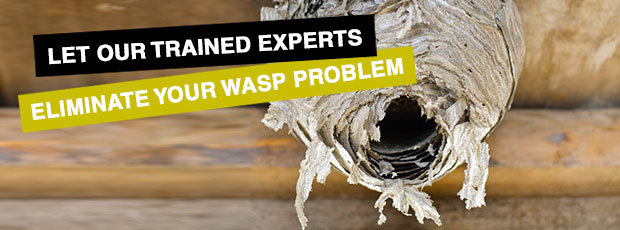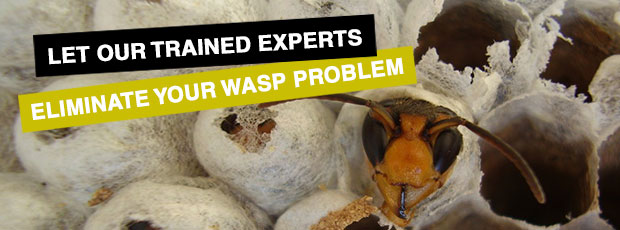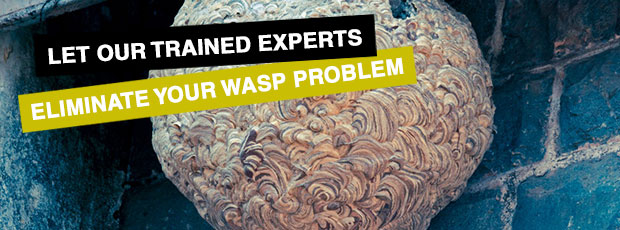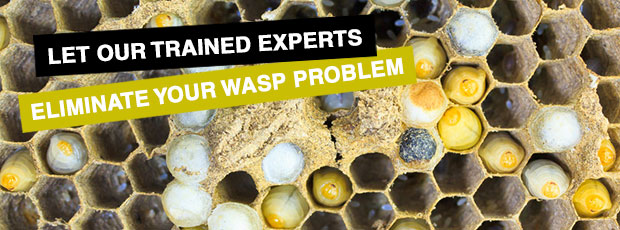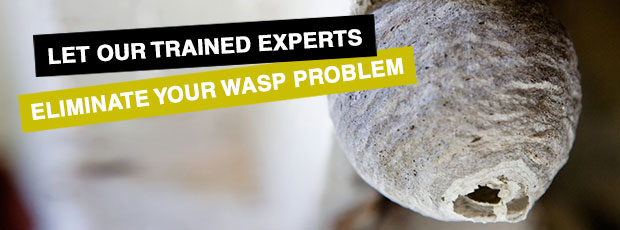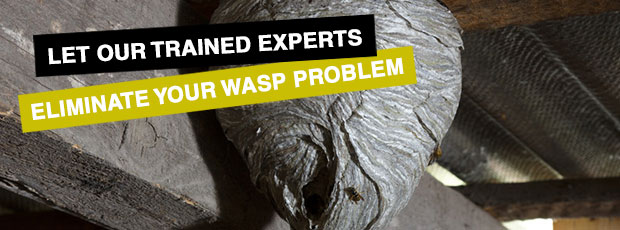London Wasp Control Helpline:
0203 026 1231
0203 026 1231
 London Wasp Nest Removal Services
London Wasp Nest Removal Services
A wasp nest can contain anything up to 20,000 wasps at one time, with the number growing throughout the season, and a hive in full-swing will produce between 100 and 250 eggs per day, all of which will hatch into larvae that will grow into adult wasps within a matter of weeks. Few people realise just how many wasps can exist within a single hive, and accidentally or deliberately disturbing a nest can provoke thousands of wasps to attack and sting in its defence.
Unlike honey-bees, wasps can sting multiple times without dying, and given that the chemical make-up of their venom is different to that contained in bee-stings, it can cause allergic reactions and even anaphylactic shock in people who suffer no reaction when stung by bees. The nature of wasp-hives themselves also make it easier to underestimate the extent and intensity of the wasps' reaction, as nests can be built to fit into any available void or space, including wall cavities, empty containers, vehicles and under eaves.
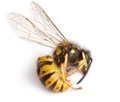 This often means that customers have stumbled onto nests they didn't realise were there, or that they have assumed a hive was much smaller than it was, as often only a small part of the hive's entrance will be visible, concealing a much larger structure tucked away behind it, fitting to fill the space in their chosen void.
This often means that customers have stumbled onto nests they didn't realise were there, or that they have assumed a hive was much smaller than it was, as often only a small part of the hive's entrance will be visible, concealing a much larger structure tucked away behind it, fitting to fill the space in their chosen void.
London Wasp Control Services
Before undertaking any treatment, we will always send out one of our technicians to evaluate the extent of the problem, the location of the nest, and the best course of action to take for dealing with the wasps themselves. Sometimes our technicians find that was has been reported as a wasp nest is actually something else, or that the nest is empty and therefore not a threat, while at other times the nest may be a bee or a hornet nest instead – although in these cases we are just as able to perform a removal.
If a nest is behind boarding or in some way built into the structure of a property itself, treatment can require special consideration, as we may need to employ special equipment or to temporarily open access to the void that the nest is occupying. Once we have ascertained the nature of the infestation, we will typically try to deal with it on the same day, although the treatments we apply will take time to completely remove the infestation.
How We Remove A Wasp Nest
In order to clear out a wasp hive, our technicians will apply an intense chemical compound right to the mouth of the nest. This compound contains Bendiocarb, one of the few genuinely effective wasp insecticides, and unavailable in sufficiently-high concentrations to anyone without the proper licensing.
Our Bendiocarb treatment is applied as a highly-pressurised dust, and it will rapidly incapacitate the wasps within the hive, although they will not be fully exterminated fully for several hours. Once our technicians have applied the insecticide it is simply a matter of waiting, as the wasps within the nest will slowly die out, sending distress signals to those wasps that are outside foraging.
Upon returning to the nest, these wasps will sense that the hive is contaminating and will avoid entering, yet at the same time they will have a physiological need to enter their nest and protect the queen. These wasps, even though they have not been affected by the insecticide, will typically die over night, unable to survive outside the nest, and usually by the next day the wasp nest is safe to remove, a procedure that can either be carried out by the customer themselves or by our technicians as an optional extra service.
 Wasp Proofing Services in London
Wasp Proofing Services in London
Unfortunately, given the nature of wasps, they can be next to impossible to proof against. While for most insects we give advice and recommend regimens you can undertake to reduce the chance of infestation, there is no guaranteed way to protect your property. While other insects can usually kept out by ensuring general cleanliness and rapidly dealing with any damp-issues within a property, factors like these have little effect on wasps, who will typically choose any space they feel they can build a well-sheltered hive in.
If possible, you can attempt to block up any exposed holes or cavities in your property that might be attractive to wasps, and should you see any wasps in the winter months, these wasps may well be hibernating queens, who will go on to build nests nearby when the weather warms up, so dealing with these wasps can prevent new infestations. Otherwise, acting quickly to remove a wasp infestation is the only real prevention method around.
Wasp nests will be smaller and less aggressive earlier in the season, and will only grow larger and more aggressive as their diet changes from aphids to fruit and their colony supports more larvae, so acting while a colony is in its early stages can prevent stinging incidents and attacks that may occur if the hive is allowed to develop.
Similarly, removing a wasp hive will also help to prevent future infestations; wasps are seasonal and will die out by the colder months, yet near the end of its life cycle, a hive will produce hundreds of new queens, who will then hibernate over the winter and then found new hives in the summer. If a nest is removed before these queens are produced at the end of a season, you greatly reduce the chance that the wasps will go on to infest the nearby area next year.
Need Wasp Control?
Noticed an increase in wasp presence? You may require professional wasp nest removal services.
Contact Our Experts
Contact our team of highly trained technicians immediately for a prompt wasp nest removal service!
Professional & Reliable Service
Our team could be with you in as little as 2 hours for an immediate solution to your wasp problems!
